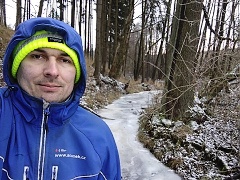 Osobní blog
Osobní blog
Soukromý, neprofesní mikroblog.
Článek č. 331
Surprising and Simple: Easy-to-See Lessons from Math, Maps, Earthquakes and Word Origins
I have noticed a few interesting videos and images from various authors about various topics recently,
and I decided to share links to these interesting and easy-to-understand educational materials in one post in an aggregated way:
1)
Pythagorean theorem
about a right-angled triangle
in a geometric physical demonstration:
The sum of the areas of the two squares on the legs (a and b)
equals the area of the square on the hypotenuse (c).
a² + b² = c²
Someone has constructed a triangle with three squares,
where a lot of small balls float from one big square to two small squares, or the other way,
to show, demonstrate and prove that the area (surface) of the big square is the sum of areas (surfaces) of those two smaller squares.
Simple, illustrative, visual, clear, effective.
https://www.facebook.com/reel/538055072286680
2)
Normal / Gaussian distribution / curve
in geometrical / physical practice:
Sand, or similar powdery material, is falling onto obstacles,
going to the left or right side of each of them.
Half of decisions is to go left,
half of decisions is to go right.
Result:
Normal distribution (Gaussian curve)
Lot of small decisions with probability 0.5 : 0.5
lead to Gaussian distribution.
https://www.facebook.com/reel/965670382126217
3)
Surface crack in the Earth's crust – one part of the land moved against another.
Clear video recording:
This is not a model,
this is a nature.
Real life. Real Earth.
Author of the post which I share here recommends to see this short videorecord more times,
watching always some specific place at the landscape, to see what this movement of land does to specific places.
https://www.facebook.com/reel/1234396204878571
4)
Error of Mercator map projection:
(a typical projection of the Globe onto a 2D image, which our modern civilisation uses the most)
There are various demonstrations of the problem when everything near to poles appears to be bigger than it really is,
I have also published an article about it at this blog some time ago:
https://www.adamek.cz/blog/?blogpost=315
(sharing also someone's picture which demonstrates it)
And I have seen also another picture now,
the picture shows the same issue a bit another way:
https://www.facebook.com/informationisbeautiful/posts/pfbid0HSkfwEkJcLXLk5mSFt296FRxrm3mrEr93U35TMxxnwibvwDHEgPcGmv98P1zeGz2l
5)
Etymology (origin) of European words (nouns)
tea = Tee = herbata = arbata = ...
vs.
čaj = чай = ... [chai]
In countries, into which the tea was imported by ships, via the sea, it is something like "tea"
(yes, it was imported via sea also into England, so also into English language).
In countries, into which the tea was imported by feet and wheels, via dry roads, it is something like [chai].
Including Czech "čaj", since Czechia is in the Central Europe, far from seas.
Interesting fact is, that in Poland, which has Baltic seacoast,
the tea is "herbata" (you can see the "ta" at the end of the word; the same like in Lithuanian "arbata"),
but the teapot (tea kettle) is "czajnik" in Polish. [chainik]
As if the tea came from the sea, but device used to make it came from the continent.
https://jakubmarian.com/tea-in-european-languages-map/
https://www.facebook.com/Uyghursbookshelf/posts/pfbid02BgtyoDz1K6ae1daKTvfFju1GjaKtSqNcz5YbKZ5dDcN8PagxtEmQezi611k1ZoB6l
Související odkazy
- https://www.facebook.com/reel/538055072286680

- https://www.facebook.com/reel/965670382126217

- https://www.facebook.com/reel/1234396204878571

- https://www.adamek.cz/blog/?blogpost=315

- https://www.facebook.com/informationisbeautiful/posts/pfbid0HSkfwEkJcLXLk5mSFt296FRxrm3mrEr93U35TMxxnwibvwDHEgPcGmv98P1zeGz2l

- https://jakubmarian.com/tea-in-european-languages-map/

- https://www.facebook.com/Uyghursbookshelf/posts/pfbid02BgtyoDz1K6ae1daKTvfFju1GjaKtSqNcz5YbKZ5dDcN8PagxtEmQezi611k1ZoB6l

Líbil se Vám článek?
Zpětná vazba – hlasování
Hlasy se na serveru připočítají k počitadlům pro tento článek, např. kolikrát tento článek někoho pobavil a kolikrát tento článek někomu pomohl.
Neukládají se jednotlivá hlasování (vzájemná kombinace hlasů, datum, čas, ani jiné údaje).
Proto nemá smysl odesílat prázdný hlas, nemělo by se co k čemu přičíst.
Ve Vašem prohlížeči nebude uložena žádná informace (cookies) o tom, že už jste hlasovali.
- Ve Vašem prohlížeči tedy nebude vidět, jak jste hlasovali.
- Kdykoliv budete moci hlasovat znovu, pokud Vám článek opakovaně pomůže (pobaví Vás, potěší, …).
- Pokud Vás právě u jednoho počítače sedí více, mohou postupně hlasovat další lidé.
Počítám člověkohlasy, nikoliv lidi.
Tedy kolikrát článek někomu pomohl,
nikoliv kolika lidem pomohl.
Třikrát potěšeného jednoho čtenáře počítám stejně jako tři různé jednou potěšené čtenáře.
Každý má do budoucna neomezený počet hlasů.
Když zapomenete, že jste pro tento článek už hlasovali, nevadí – když Vám někdy v budoucnu bude např. užitečný znovu, tak mu znovu pošlete hlas, že Vám byl užitečný.
Štítky, labels, kategorie, témata, tagy, hashtagy
(ve vývoji)#science-technology
#languages #czech-language #polish-language
#ostatni
 Martin Adámek
Martin Adámek


 unikátní obsah této stránky
unikátní obsah této stránky 


































 Tyto stránky jsou pravidelně archivovány Národní knihovnou ČR pro svou kulturní, vzdělávací, vědeckou, výzkumnou nebo jinou informační hodnotu za účelem dokumentace autentického vzorku českého webu. Jsou součástí kolekce českých webových stránek, které NK ČR hodlá dlouhodobě uchovávat a zpřístupňovat pro budoucí generace. Jejich záznam je součástí České národní bibliografie a katalogu NK ČR.
Tyto stránky jsou pravidelně archivovány Národní knihovnou ČR pro svou kulturní, vzdělávací, vědeckou, výzkumnou nebo jinou informační hodnotu za účelem dokumentace autentického vzorku českého webu. Jsou součástí kolekce českých webových stránek, které NK ČR hodlá dlouhodobě uchovávat a zpřístupňovat pro budoucí generace. Jejich záznam je součástí České národní bibliografie a katalogu NK ČR.  Skrýt nástroje
Skrýt nástroje